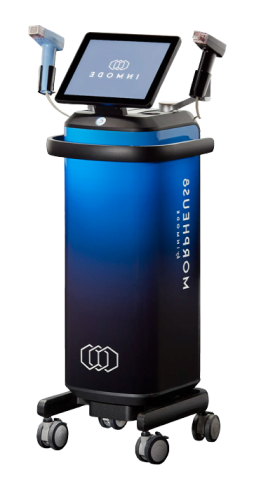The field of neurotoxin treatment has emerged as an important healthcare intervention, providing effective remedies for various medical conditions. This blog will go into detail about what neurotoxin treatment is, and how it fits into today’s medical practice. Furthermore, we will discuss the advantages and disadvantages involved in such a therapeutic approach, thereby giving the reader a holistic view of its uses and limitations.
How Neurotoxins Function in the Treatment of Medical Disorders
Neurotoxins exert therapeutic effects by blocking or inhibiting the release of specific chemicals, such as acetylcholine, that transmit nerve signals. Through this, they can relieve symptoms related to a variety of medical conditions, including muscle contractions, chronic headaches, and excessive sweating.
Pros of Neurotoxin Treatment
Neurotoxin treatment has several pros that make it a better option for patients and health care experts as well.
1. Effective and targeted treatment methods
One way of managing certain diseases linked to the nervous or muscular system is by using neurotoxins. These substances provide quick relief from conditions that are caused by nerves or muscles that have a problem.
2. Symptoms and impairments can be reduced
Neurotoxin treatment is advantageous because it can minimize the symptoms and impairments. These treatments help people with muscle spasms, migraines, sweating too much, or any other disorder feel better and improve their lives tremendously.
3. Enhancing the Quality of Life
People’s lifestyles improve when the effects of a neurotoxic agent are minimized. This way, one is able to manage their body and engage in normal daily routines without experiencing any painful encounters or limits that come with having a certain condition.
Read also: Neurotoxin Treatment Myths vs Facts
4. Versatility in Medical Applications
It is very versatile; the neurotoxin treatments range from neurological disorders to cosmetic procedures.
5. Treating neurological disorders
Neurotoxin treatments have been known to be highly effective in managing different forms of nervous disorders, such as Parkinson’s disease, essential tremor, and even Tourette syndrome. They help relieve symptoms and improve motor function, thus enabling patients to live a fuller life.
6. Cosmetic Procedures That Are Effective
Botox is always mentioned in cosmetic procedures. It is very helpful in reducing wrinkles, fine lines, and crow’s feet so that one looks young again. Surgery can be avoided by using them to change a number of facial features, such as jawlines or eyebrows, for example.
7. Newly Discovered Uses of Neurotoxins in Therapy
Medical exploration into the fresh therapeutic uses of neurotoxins never ends. For instance, research is ongoing to find out how these toxins can be harnessed for the treatment of depressive illnesses, chronic pain, and aiding addicts to quit opioid dependence. Clearly, this kind of therapy exhibits great adaptability and potential.
8. Patients feel better faster
Patients are more comfortable after neurotoxin treatment because it is less invasive and therefore minimizes recovery time. This enables the patients to recuperate quickly from the surgery and get back into their daily routine as soon as possible.
| Experience the transformative power of neurotoxin treatments. Schedule your appointment for a radiant, ageless you |
Cons of Neurotoxin Treatment
It is important to consider some of the disadvantages and limitations that may come with the use of neurotoxin treatment, even though it has several advantages.
1. Effects that are fleeting
One of the main drawbacks of treatment using neurotoxins is that it is temporary. After a period of weeks or months, results obtained from its usage may last before one may need to have the procedure repeated for the purposes of maintaining the desired outcome.
2. Balancing Cost with Longevity of Results
In an effort to weigh the costs against the durability of treatment, there is a continuous attempt. Additionally, some treatments also have repeating costs, so it should be established whether the benefits outweigh the financial commitment or not.
3. Managing Discontinuation and Withdrawal Concerns
If the procedure is stopped after a long time, there may be a return or worsening of symptoms. Health care providers and patients need to think about withdrawal symptoms that might happen and make a plan for them.
Read also: 7 tips for a successful neurotoxin treatment session
4. Common and mild side effects
The neurotoxin treatment may be followed by certain side effects, including transient muscle weakness, bruising, or swelling at the site of injection. These effects usually subside after a week or so.
5. Rare but serious adverse reactions
The truth is that neurotoxin treatment has serious side effects, but they are rarely seen. These include allergic reactions, difficulty breathing or swallowing, muscle or nerve damage, and more. However, most of these severe forms of response can be avoided if given by a healthcare professional who knows what they’re doing.
6. Mitigating Risks: Identified and Explained
To prevent accidents, healthcare workers should be warned about the risks that accompany neurotoxins. Safe administration only happens if there is open communication between doctors and patients.
7. Different Patients’ Varying Efficacy
The efficiency levels of neurotoxin treatment vary among patients due to several factors, such as the patient’s condition, their general health, and the type of neurotoxin used. Some patients will experience great improvement in their symptoms, while others will need higher doses or different treatments for their own satisfaction.
8. Factors That Influence Treatment Results
The competence of the doctor, the appropriateness of body placement, and what you do after treatment may affect the outcome of neurotoxin treatment. To achieve optimal results in terms of treatment, they should all be considered.
Conclusion
Neurotoxin treatment offers precise and efficient therapy across medical fields, with advantages such as less invasiveness, long-lasting results, and a proven safety profile. However, temporary effects and potential risks must be considered, along with individual variations in response. To decide on its suitability, consulting healthcare professionals is crucial for personalized assessments and strategies. For more information, visit The Aesthetics Studio and book an appointment now.
Frequently Asked Questions:
Q1. What medical conditions can neurotoxin treatment be used for?
Neurotoxin treatment can be used for various medical conditions, including muscle spasms, chronic migraines, cervical dystonia, overactive bladder, and certain neurological disorders. It offers a targeted approach to address specific symptoms and impairments associated with these conditions.
Q2. How long do the effects of neurotoxin treatment last?
The duration of the treatment’s effects can vary depending on the condition being treated and the specific neurotoxin used. The effects typically last from several weeks to several months.
Q3. Are there any serious risks associated with neurotoxin treatment?
While generally safe, there is a potential for serious risks and adverse reactions with neurotoxin treatment. These risks can be minimized when the treatment is administered by experienced healthcare professionals following proper guidelines and protocols.
Q4. Can neurotoxin treatment be combined with other therapies?
Neurotoxin treatment can be combined with other therapeutic approaches, depending on the individual’s condition and treatment goals. This can include physical therapy, medications, or surgical interventions, as determined by healthcare professionals.
Q5. Is neurotoxin treatment suitable for everyone?
Neurotoxin treatment may not be suitable for everyone, and individual circumstances need to be considered. Factors such as medical history, current medications, and allergies should be discussed with healthcare professionals to determine the suitability of neurotoxin treatment.













